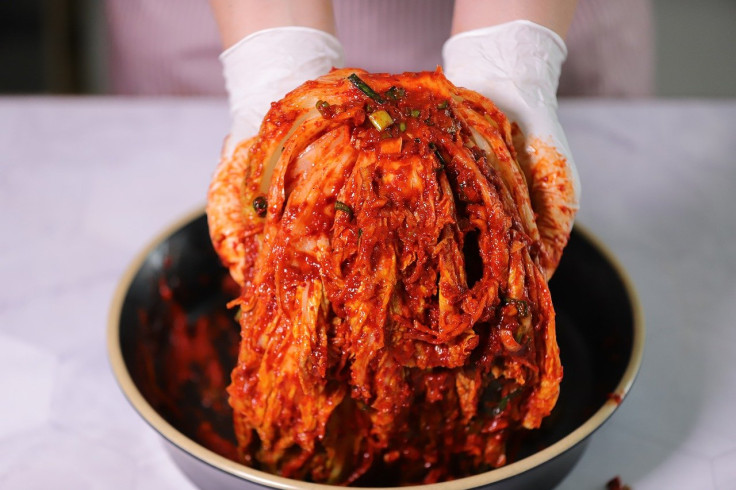The Science Of Kimchi: Researchers Find Why Using The Traditional Jars Is Best
KEY POINTS
- The researchers measured how the gases evolved while kimchi fermented inside onggi
- It's claimed that kimchi made in onggi has the highest quality
- Turns out, its porous walls enable kimchi to ferment faster
Kimchi has gone from becoming a staple in Korean meals to a globally popular food item. Today, people mostly make it by fermenting them in plastic or glass tubs, but there's something about making it in traditional clay jars that makes it just that much more excellent.
A team of scientists now found out why.
Kimchi is a traditional Korean dish that can be made of various fermented vegetables like cabbage, radish, or scallions. Apart from being delicious, kimchi is also said to boast various health benefits such as boosting the immune system and reducing inflammation.
For their study, which was published in the Journal of the Royal Society Interface, researchers Soohwan Kim and David L. Hu of Georgia Institute of Technology (Georgia Tech) delved deep into the science of kimchi. In particular, they focused on the traditional clay vessels called onggi, in which kimchi has been made since ancient times.
There is the long-standing claim that kimchi that's fermented in onggi is the one with the highest quality, according to Georgia Tech. However, the science behind these claims is unclear — while previous studies have found that onggi-made kimchi has more lactic acid bacteria, they did not get a closer look at how it connects with onggi.
"We wanted to find the 'secret sauce' for how onggi make kimchi taste so good," Hu said in the university release. "So, we measured how the gases evolved while kimchi fermented inside the onggi — something no one had done before."
To find out, Hu and Kim made kimchi in a glass container and in onggi that was procured from Jeju, South Korea. They then measured the time course of carbon dioxide oxidation, which they noted to be a sign of fermentation.
Sure enough, they found the science behind onggi's kimchi-making prowess.
"(W)e conclude that porous walls help the onggi to 'exhale' carbon dioxide, lowering internal levels to those favoured by lactic acid bacteria," they wrote. "The positive pressure inside the onggi and the constant outflow through its walls act as a safety valve for bacteria growth by blocking the entry of external contaminants without mechanical components."
It seems that onggi provides a conducive environment for beneficial bacteria by releasing carbon dioxide bit by bit.
In fact, carbon dioxide levels in onggi were only less than half of the levels in the glass jar, noted Georgia Tech, while in the glass jar, it appears that the lactic acid bacteria ended up getting suffocated "by their own carbon dioxide."
"We discovered that the right amount of porosity enables kimchi to ferment faster, and these onggi provide that," Hu said in the release.
There's now scientific proof that the best kimchi comes from onggi. @drdavidhu measured onggi CO2 levels during fermentation and developed a mathematical model to show how gas generated and moved through the onggi’s porous walls. 🥬 https://t.co/mZSPYPTjUO pic.twitter.com/i08BlGktIV
— Georgia Tech Research (@GTResearchNews) April 12, 2023
Onggi, it appears, is simply and impressively an optimal vessel for making kimchi. As Hu noted, they are "very high-tech" even though they date back thousands of years.
Semi-porous vessels or jars, the university noted, aren't quite easy to make. Today, the number of artisans that use ancient means to make onggi has dwindled, and the market is now seeing "inauthentic" versions of it.
The researchers hope that the results of their work highlight the important work of traditional artisans.
"Onggi were designed without modern knowledge of chemistry, microbiology, or fluid mechanics, but they work remarkably well," Kim said in the release. "It's very interesting to get these new insights into ancient technology through the lens of fluid dynamics."

© Copyright IBTimes 2024. All rights reserved.






















